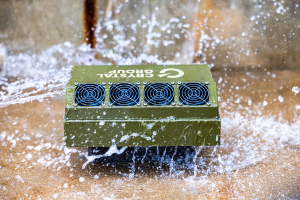Why high-performance edge computing is critical for defense
Artificial intelligence (AI) is transforming the modern battlespace, enabling faster decision-making, enhanced situational awareness, and autonomous operations. However, to fully harness AI’s power, defense operations must shift from traditional data centers to high-performance edge computing. The ability to process, analyze, and act on data in real time—without relying on centralized networks—provides a crucial tactical advantage.
For defense leaders, the challenge isn’t just collecting data; it’s making that data actionable in the moment. That’s why the Department of Defense and its mission partners are prioritizing AI-driven computing at the tactical edge—where speed, reliability, and ruggedization are paramount.
“Historically, systems at the edge were focused on data collection,” said Morgan Uridil, advanced program pursuits manager at Crystal Group. “But lately, we have been seeing customers demanding solutions for AI machine learning and edge inferencing. The amount of compute that’s happening in those extreme environment situations is growing.”
Deploying AI where it matters most
In controlled lab environments, AI solutions can operate under ideal conditions, running complex algorithms without hardware constraints. But the real-world battlefield is far from predictable. Defense applications require rugged, compact, and power-efficient AI systems capable of running advanced inferencing models in extreme conditions.

Take, for example, predictive maintenance on military aircraft. AI-powered analytics can detect potential failures before they happen, reducing downtime and increasing operational readiness. But for this to be effective, AI models must process data on the aircraft itself, rather than relying on cloud-based solutions that introduce latency and security risks.
To make AI-driven decisions in real time, military teams need high-performance computing in a rugged, SWaP-optimized form factor. That’s where Crystal Group excels.
Right-sizing AI for defense: overcoming SWaP constraints
Adapting AI solutions for defense isn’t as simple as deploying commercial off-the-shelf (COTS) technology. Defense operations demand computing hardware that is:
- Compact – Space is limited on aircraft, ships, and ground vehicles.
- Lightweight – Heavy systems reduce mobility and increase logistical strain.
- Power-efficient – AI must run reliably with minimal energy consumption.
Yet, military teams don’t have time to wait for custom-built solutions.
“They need the latest, greatest electronics available, and they need to use it now,” said Todd Prouty, senior business development manager at Crystal Group. “They can’t wait for someone to lay out a circuit card and do a custom component layout design that meets their exact fit needs.”
Crystal Group helps customers right-size AI computing systems, transforming lab-developed AI solutions into rugged, mission-ready hardware. By working directly with leading technical partners, we integrate cutting-edge AI capabilities into defense applications—without compromising durability or efficiency.
The advantage of AI at the edge
Defense decision-makers understand that speed is everything. Whether it’s autonomous drone operations, real-time threat detection, or AI-assisted battlefield analytics, edge inferencing allows missions to proceed without delays.
By engineering rugged AI-ready solutions, Crystal Group ensures real-time processing power where it’s needed most. Our solutions help our customers:
- Enhance battlefield awareness with real-time AI insights.
- Reduce latency by processing data locally instead of relying on cloud networks.
- Improve operational efficiency by enabling faster, AI-driven decisions.
AI-driven defense technology is advancing at an unprecedented pace. But without rugged, reliable computing solutions, military teams risk being held back by infrastructure limitations. Crystal Group is closing that gap.
Pushing the boundaries of AI in defense
Crystal Group is at the forefront of ruggedized AI deployment. We help military teams bridge the gap between research lab innovations and real-world mission execution by engineering high-performance, battlefield-ready computing solutions.
The future of defense belongs to AI-powered edge computing—and Crystal Group is leading the way.